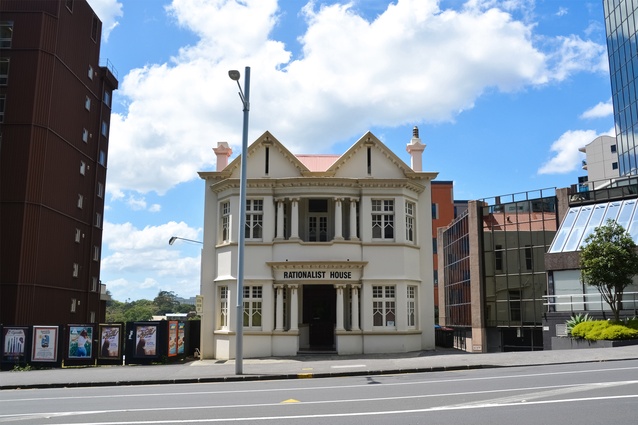Living history
"The government clearly wants to wipe out Auckland's historic suburbs," asserts Margot McRae in a fiery piece in the Herald in late June.
She’s talking about the recently imposed regulations intended to solve the housing crisis by increasing residential density – the National Policy Statement on Urban Development (NPS-UD), introduced in August 2020 and; the Medium Density Residential Standards (MDRS), introduced in October 2021 with Nationals’ blessing. The NPS-UD requires councils to allow for at least up to six-storey buildings within walkable distances of the city centre, metropolitan centres, and rapid transit stops. The (MDRS) allows for up to three homes of up to three storeys on most residential sites.
McRae, chairwoman of Devonport Heritage and long-time campaigner for heritage protection, was trying to defend Auckland Council’s proposal to allow designated “Special Character Areas” as exceptions to the new blanket rules. Proposed protection included the suburbs of Cheltenham and Devonport on the North Shore, 94 per cent of Grey Lynn Central and 90 per cent of Ponsonby East. But, in May, Environment Minister David Parker said such moves went too far – that Auckland Council needed to stop trying to protect the character of entire suburbs and focus only on specific heritage buildings. That was followed by Housing Minister Megan Woods in June urging Auckland Council to reduce the number of sites it is trying to retain as character areas, saying current proposals restrict development in swathes of the city that are best suited to intensification. Woods claimed, “restrictions on development in highly desirable areas benefit the current owners of property at the expense of new home buyers and renters.”
McRae argued that such an approach – pepper-potting 12m-high housing blocks among largely single-storey Victorian/Edwardian villas mixed with various forms of bungalow – would not only destroy the historic areas’ character and identity, it also wouldn’t work. “They [the government] stubbornly overlook that land values in wealthy historic suburbs are so high that any new builds there will be top quality apartments for the rich and not provide anything remotely affordable. Some property owners in these areas will be rubbing their hands at the thought of the financial gains to be had by selling their houses for upmarket apartments.”
Not everyone agrees. Oscar Sims, of the Coalition for More Homes, in the same issue of the Herald, says that all new housing supply helps affordability: “If we build more homes, then it will ease pressure on the market, helping affordability.” Sims points out that suburbs like Ponsonby, Freemans’s Bay and Grey Lynn weren’t always wealthy neighbourhoods. “In the middle of the late century they were working class – filled with cheap homes and lacking infrastructure. Ironically, it is that cheaply-built housing that many of our opponents want to preserve with ‘Special Character’ protections.”
Allow it and they will build. Here, the underlying soulless heart of the NPS-UD and MDRS is exposed as little more than a neo-liberal pumping machine, which incentivises demolition and rebuilding through the vast future profits to be made from constructing at least three houses where there was one. In other words, let the market decide. Surely by now we know this tired mantra doesn’t work, especially for something as infrastructural as housing.
What’s also woefully missing from the blunt mechanisms of NPS-UD and MDRS is any consideration of climate change and reducing building emissions. Combined with rules that demanded only carbon-neutral or, even better, carbon-negative houses be constructed, the new density rules could make a whole lot more sense. Not to mention requiring existing housing should not be demolished, but instead recycled or relocated. As many have pointed out, there is plenty of evidence that three-level, medium-density housing, aka Goldilocks housing, is a sweet spot for not only creating sustainable, low-embodied-carbon buildings but, also, for making highly desirable, liveable, community-based neighbourhoods.
As for Special Character areas, it’s worth noting their Victorian/Edwardian villas and other early imports like the California bungalow have proved remarkably resilient and adaptive housing typologies that have provided ongoing habitation for a range of diverse occupants for well over 100 years. They set a good model to emulate – not only have they stood the test of time but they’ve also done so employing low-embodied-carbon materials.
These Special Character areas have a living history: old houses that have been lived in and worked in and used for more than a century. A living historic environment. Their great adaptability stems from their capacity to present a decorative street façade that speaks to a bygone time, of another world and ways of dwelling imported to our shores, while at the same time providing vast space and volume behind that historic visage to redevelop pretty much as suits the occupants’ needs.
Acknowledging what’s there while building for the future. As they’ve shown for more than 100 years, Special Character buildings don’t want to stay frozen in time – they want to adapt to what’s needed. Assisted by more-nuanced density rules encouraging, for example, not only carbon-neutral building but also greater flexibility in multigenerational living, Special Character areas could continue to play a part in providing more sustainable density for Auckland. In their relatively short history, these areas have already shown they can retain their historical façades and adapt to their occupants’ needs. With planning policy that could acknowledge climate change and look beyond demolish-and-replace, these buildings would readily adapt again.










